Ultraviolet astronomy
Earth's atmosphere blocks the UV radiation from the universe that can only be observed from space. This radiation transmits unique information about the Universe chemical composition and it is extremely sensitive to the diffuse matter in the Intergalactic Medium.
Determining the composition and the distribution of the intergalactic matter is fundamental to comprehend the nature of the dominant forces in the Universe, the nature of dark matter and the chemical evolution of the Universe from its original composition, hydrogen and helium, to the present chemical richness.
The Ultraviolet astronomy is also fundamental to study stars and planets atmospheres. Most of the planets detected up to this moment are gaseous giants, as Jupiter, orbiting very close to their parent star. Stellar radiation evaporates the atmosphere of planets leaving traces that can be detected in this range.
Ultraviolet astronomy is also essential to investigate the astronomical engines: plasma engines which are capable to accelerate ionized gas up to velocities close to the light speed by converting gravitational energy into mechanical energy.
|
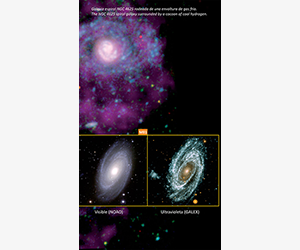 |
Previous ultraviolet missions
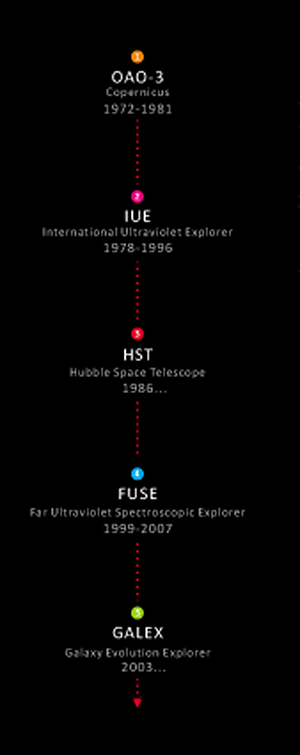 |
The longest living ultraviolet telescopes have been IUE and HST. IUE was a 45 cm diameter telescope launch into a geosynchronus orbit in 1978. The telescope was operating until September 1996. HST is still in operation and has flown the most sophisticated ultraviolet instrumentation ever built. |
| |
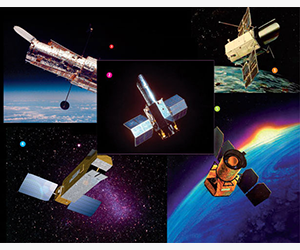 |
Telescope characteristics
| The telescope (T-170M) consists of optical system, structural module and service complex. |
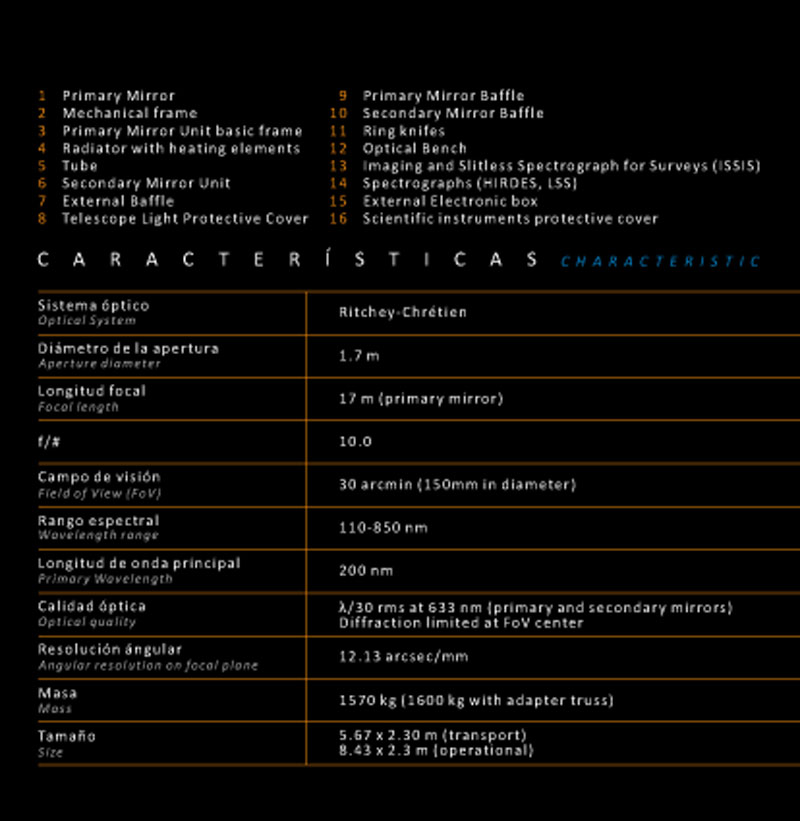
|
The primary mirror unit (PMU) is the main telescope structural element. There are three attachment points of the telescope to the spacecraft service module in the bottom frame part. The optical bench with the scientific instrumentation and the primary mirror baffle are mounted on the PMU.
The secondary mirror unit contains a light cover with the deployment mechanism. A rotary external baffle is also located in the upper part of the telescope tube. The external rotary baffle has an oblique cut for light exposures prevention of the telescopes internal cavity. |
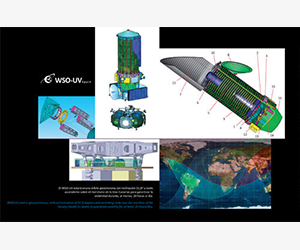
|
WSO-UV. World Space Observatory - Ultraviolet
The World Space Observatory - Ultraviolet (WSO-UV) is an international space telescope that will be launched in 2023, to guarantee observatory type access in the ultraviolet (UV) range to astronomers after the end of the Hubble Space Telescope mission.
The WSO-UV is a multipurpose observatory consisting of a 1.7 maperture telescope and two instruments for high-resolution spectroscopy, long-slit low-resolution spectroscopy, and deep UV and optical imaging. The WSO-UV mission will last for five years with a planned extension of five years more.
The WSO-UV will provide observations that are of exceptional importance for the study of many astrophysical problems. The mission has five key scientific objectives:
- The study of galaxy formation and the chemical evolution of the Universe, covering the last 80% of its lifetime (0< z < 2).
- The measurement of the properties of diffuse matter in the Universe and its distribution in galactic haloes.
- The formation and evolution of the Milky Way.
- The role of discs in astronomical engines.
- The chemical composition and properties of the atmospheres of giantextrasolar planets.
The Spanish participation is funded by the
Ministry of Economy, Industry and Competitiveness (industrial activities) and the Ministry of Science, Innovation and Universities (scientific activities) through the Spanish Space Plan. The Universidad Complutense de Madrid (UCM) is the scientific responsible of the Spanish participation in the project. Shared mission and science operations between Russia and Spain are planed for the whole WSO-UV mission lifetime. UCM hosts the Spanish science and mission operations center for the ground segment of the WSO-UV. |
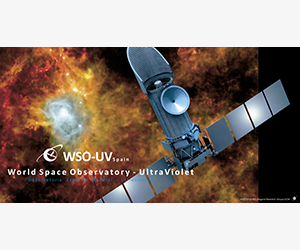
|
Chemical enrichment of the Universe - Intergalactic medium
One of the most relevant issues in modern astrophysics is the investigation of the chemical evolution of the Universe and, especially of the diffuse baryonic content in the intergalactic medium. Gas and stars are the dominant baryonic components of the Universe; both interact through gravitation, starbirth and stardeath. Gas mixing is fundamental for the chemical enrichment of diffuse matter in space. The most sensitive features to measure the properties of the IGM, such as the resonance spectral lines of the most abundant species in nature, are in the ultraviolet.
WSO-UV instruments will allow:
 To map the gas distribution and the characteristic structure scales (physical forces triggering Galaxy formation)
To map the gas distribution and the characteristic structure scales (physical forces triggering Galaxy formation)
 To determine the ionization fraction and to describe the UV radi ation field.
To determine the ionization fraction and to describe the UV radi ation field.
 To study the heavy elements enrichment in the Universe (taking into account the fraction of different species with respect
To study the heavy elements enrichment in the Universe (taking into account the fraction of different species with respect
to iron and silicon).
The high resolution spectrographs will detect the absorption of Lyman-alpha radiation by diffuse hydrogen in the intergalactic medium. In this manner the characteristics of galactic haloes and the location of diffuse clouds in the space among the galaxies will be studied. WSO-UV will provide the best sensitivity ever reached for such studies in the redshift range (0.5<1). It will also allow to measure the abundance of very relevant elements such as oxigen or zinc.
Star formation history & the Milky Way
The investigation of the chemical evolution is important also at Galactic scale, since the Milky Way disk and halo represent a close laboratory where to start the comprehension of what happens in the rest of the Universe.
For example, phenomena of hot outflows occurs due to the interaction of the disk interstellar medium with the halo, the UV absorption lines are the most sensitive probes for understanding such processes.
Also the chemical abundances of stars in open and globular clusters is a powerful tool to understand the Galaxy evolution: progress requires to measure the abundance and ionization stage of heavy elements which requires access to the ultraviolet range.
The origin of life. The astrophysical engines
Several objects in the Universe act as gravitational engines: stars (T Tauri, interactive binaries), black holes, AGN, quasars
These engines can accelerate large masses up to velocities close to light speed, and generate highly collimated outflows and jets: energy of various forms (gravitational, thermal, radiative, magnetic) is indeed converted into mechanical energy. These mass ejections are hot because the energies involved are huge. The efficiency of the engines is about a 10% and there are thermal loses that heat the outflowing gas. The hot gas radiates in the UV range.
T Tauri stars (primitive Solar Systems) show a clear UV and X-ray excess due to the presence of the engine. The mass outflow can be investigated by some forbidden lines in the UV (e.g. Si III and C III features) which appear to be produced by the presence of a strong magnetosphere. These studies are related also to the comprehension of the role of high energy radiation in the first phases of Solar evolution, as well as to the evolution of atmospheric chemistry in forming planets.
Other interesting astronomical engines act in AGNs and microquasars, where the mass output is produced by the accretion disk, and also in accreting white dwarfs, where a similar process occurs.
|
| |
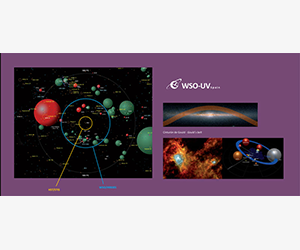 |
Ground Segment of the WSO-UV project
The WSO-UV Ground Segment includes all the infrastructure and facilities involved in the preparation and execution of the WSO-UV mission operations, which typically encompass real-time monitoring and controlling of the spacecraft, as well as reception, processing and storage of the scientific data.
The Ground Segment is developed by Russia and Spain that will coordinate the Mission and Scientific operations and provide the satellite tracking stations for the project.
The main facilities of the WSO-UV Ground Segment are:
- The Ground Station Control Centre and Ground Communications Subnet, which provide downlink-uplink communication between the spacecraft and the rest of the Ground Segment.
- The Mission Operations Centre, mainly in charge of providing the real-time spacecraft monitoring and control function. It also includes the flight dynamics function (orbit determination and attitude reconstitution).
- The Science Operations Centre (SOC), responsible for adequate scheduling and supervision of the WSO scientific operations. The SOC also comprises the Analysis System, responsible for calibrating the observations as well as verifying and processing the scientific data.
The WSO-UV Science Operations Centre (SOC) is in charge of handling and archiving all the data products acquired by the WSO-UV instruments and made the scientific data products available to the community.
Therefore, it includes the following components:
- The Scientific Data Reception System (SDRS).
- The Operational Control Centre (OCC).
- The WSO Science Control Centers (SCCs).
The OCC is the part of the SOC co-located with the WSO-UV Mission Operations Center (MOC).
The SCCs are formed by the set of SOC components in charge of:
- The final archive of data.
- L2 processing from L1 level.
- Provision of the scientific analysis tools to the community.
- Provision of proposal reception and handling systems.
There will be two SCCs, one at INASAN, one at UCM. The UCM premises will be hosted by JCUVA.
|
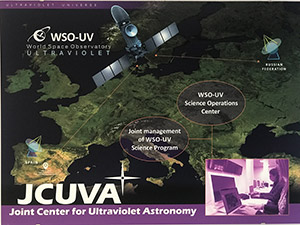 |







